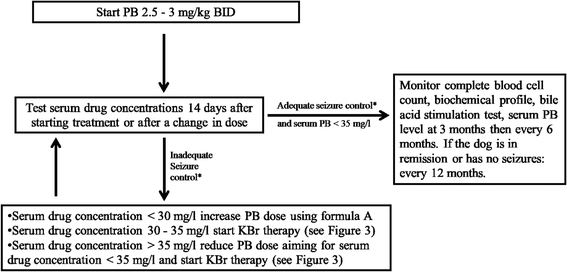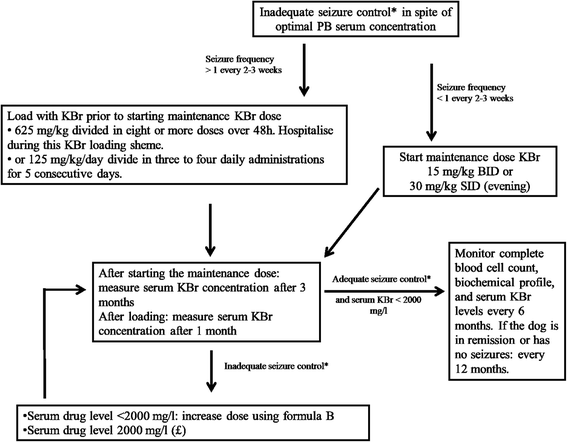International Veterinary Epilepsy Task Force consensus proposal: medical treatment of canine epilepsy in Europe
- PMID: 26316233
- PMCID: PMC4552371
- DOI: 10.1186/s12917-015-0464-z
International Veterinary Epilepsy Task Force consensus proposal: medical treatment of canine epilepsy in Europe
Abstract
In Europe, the number of antiepileptic drugs (AEDs) licensed for dogs has grown considerably over the last years. Nevertheless, the same questions remain, which include, 1) when to start treatment, 2) which drug is best used initially, 3) which adjunctive AED can be advised if treatment with the initial drug is unsatisfactory, and 4) when treatment changes should be considered. In this consensus proposal, an overview is given on the aim of AED treatment, when to start long-term treatment in canine epilepsy and which veterinary AEDs are currently in use for dogs. The consensus proposal for drug treatment protocols, 1) is based on current published evidence-based literature, 2) considers the current legal framework of the cascade regulation for the prescription of veterinary drugs in Europe, and 3) reflects the authors' experience. With this paper it is aimed to provide a consensus for the management of canine idiopathic epilepsy. Furthermore, for the management of structural epilepsy AEDs are inevitable in addition to treating the underlying cause, if possible.
Figures



References
-
- Ben-Menachem E. Pregabalin pharmacology and its relevance to clinical practice. Epilepsia. 2004;45. - PubMed
MeSH terms
Substances
LinkOut - more resources
Full Text Sources
Other Literature Sources
Medical

